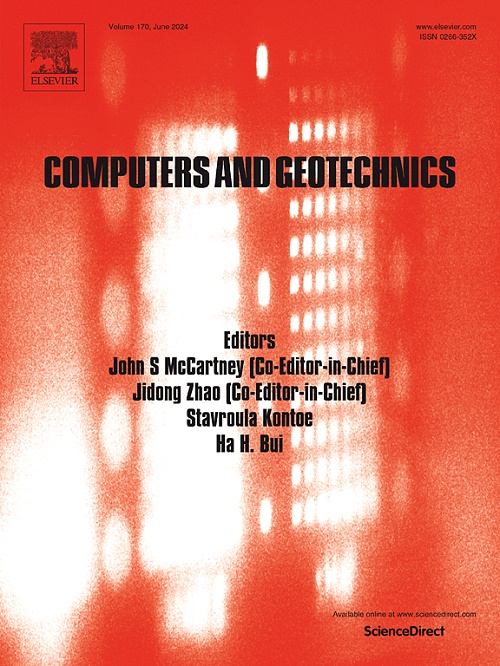Probabilistic fragility assessment of shallow-founded buildings in liquefiable soils treated by enhanced drainage and densification considering short and long-term responses
IF 5.3
1区 工程技术
Q1 COMPUTER SCIENCE, INTERDISCIPLINARY APPLICATIONS
引用次数: 0
Abstract
This study quantifies the seismic fragility assessment of shallow-founded buildings in liquefiable and treated soils, enhanced by drainage and densification, considering both short- and long-term behaviors. A conceptual framework is proposed for developing seismic fragility curves based on engineering demand parameters (EDPs) of buildings subjected to various earthquake magnitudes. The framework for establishing seismic fragility curves involves three essential steps. First, nonlinear dynamic analyses of soil-building systems are performed to assess both the short-term response, which occurs immediately following an earthquake, and the long-term response, when excess pore water pressure completely dissipates, and generate a dataset of building settlements. The seismic responses are compared in terms of excess pore water pressure buildup, immediate and residual ground deformation, and building settlement to explore the dynamic mechanisms of soil-building systems and evaluate the performance of enhanced drainage and densification over short- and long-term periods. Second, 38 commonly used and newly proposed intensity measures (IMs) of ground motions (GMs) are comprehensively evaluated using five statistical measures, such as correlation, efficiency, practicality, proficiency, and sufficiency, to identify optimal IMs of GMs. Third, fragility curves are developed to quantify probability of exceeding various capacity limit states, based on structural damage observed in Taiwan, for both liquefaction-induced immediate and residual settlements of buildings under different levels of IMs. Overall, this study proposes a rapid and straightforward probabilistic assessment approach for buildings in liquefiable soils, along with remedial countermeasures to enhance seismic resilience.
考虑短期和长期响应的强化排水和致密化处理的可液化土壤中浅基础建筑物的概率脆弱性评估
本研究量化了液化和处理土壤中浅层建筑的地震易损性评估,考虑了短期和长期行为,通过排水和致密化增强。提出了一种基于不同震级下建筑物的工程需求参数(EDPs)的地震易损性曲线的概念框架。建立地震易损性曲线的框架包括三个基本步骤。首先,对土-建筑系统进行非线性动力分析,评估地震后立即发生的短期反应和超孔隙水压力完全消散时的长期反应,并生成建筑沉降数据集。从超孔隙水压力累积、地面即时变形和残余变形、建筑沉降等方面对地震反应进行了比较,探讨了土-建筑体系的动力机制,并评价了短期和长期强化排水和致密化的性能。其次,利用相关性、有效性、实用性、熟练度和充分性5个统计指标,对38种常用和新提出的地震动强度指标进行综合评价,确定最优地震动强度指标。第三,以台湾地区所观察到的结构损伤为基础,建立易损性曲线,量化建筑物在不同水平IMs下液化引起的即时沉降和剩余沉降超过各种能力极限状态的概率。总的来说,本研究提出了一种快速和直接的概率评估方法,用于液化土壤中的建筑物,以及提高地震恢复力的补救措施。
本文章由计算机程序翻译,如有差异,请以英文原文为准。
求助全文
约1分钟内获得全文
求助全文
来源期刊

Computers and Geotechnics
地学-地球科学综合
CiteScore
9.10
自引率
15.10%
发文量
438
审稿时长
45 days
期刊介绍:
The use of computers is firmly established in geotechnical engineering and continues to grow rapidly in both engineering practice and academe. The development of advanced numerical techniques and constitutive modeling, in conjunction with rapid developments in computer hardware, enables problems to be tackled that were unthinkable even a few years ago. Computers and Geotechnics provides an up-to-date reference for engineers and researchers engaged in computer aided analysis and research in geotechnical engineering. The journal is intended for an expeditious dissemination of advanced computer applications across a broad range of geotechnical topics. Contributions on advances in numerical algorithms, computer implementation of new constitutive models and probabilistic methods are especially encouraged.
 求助内容:
求助内容: 应助结果提醒方式:
应助结果提醒方式:


